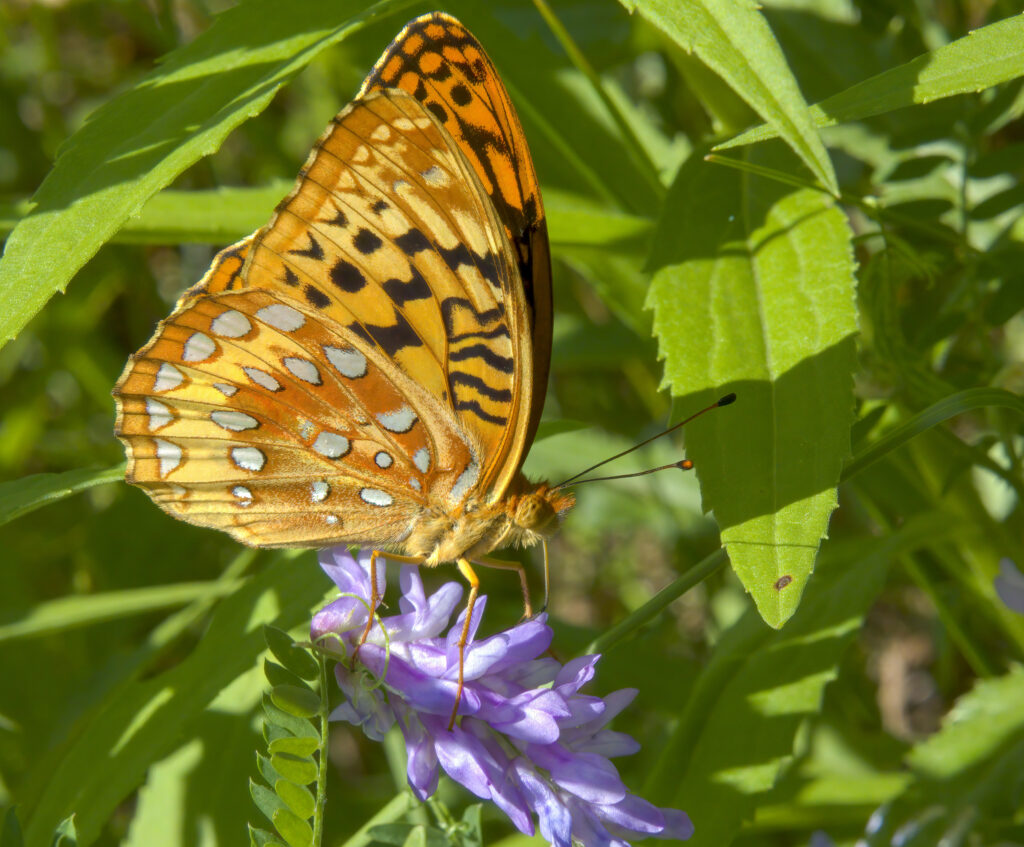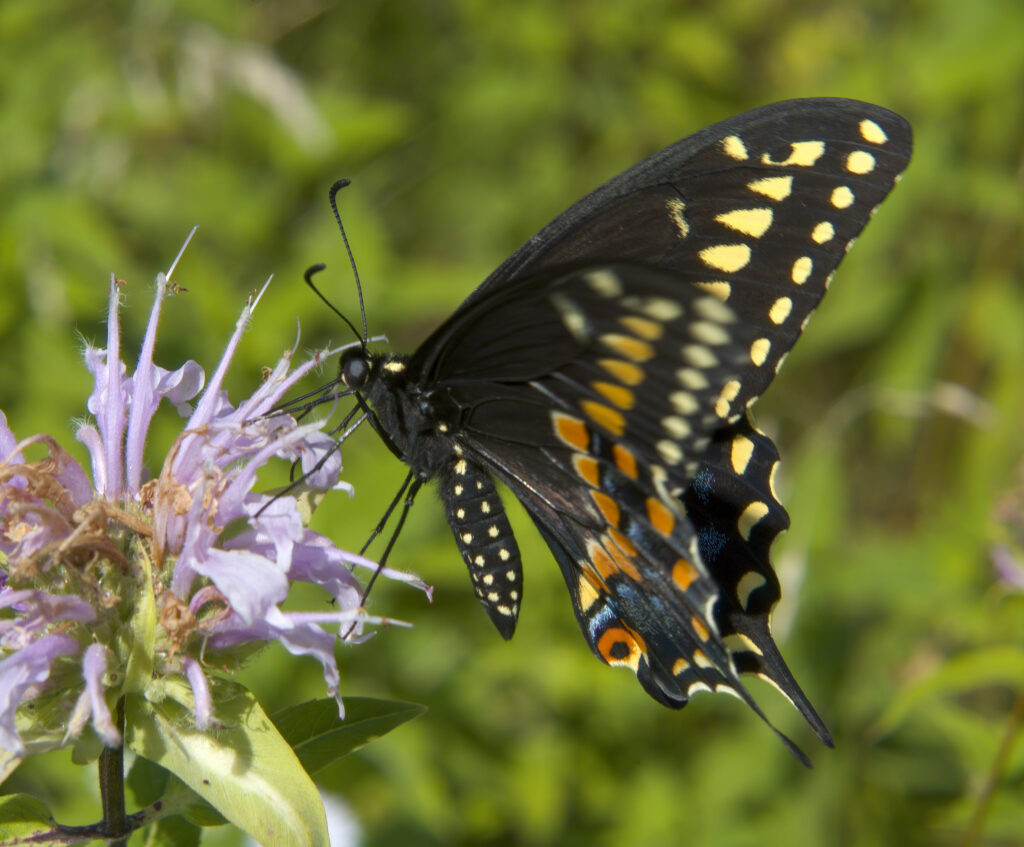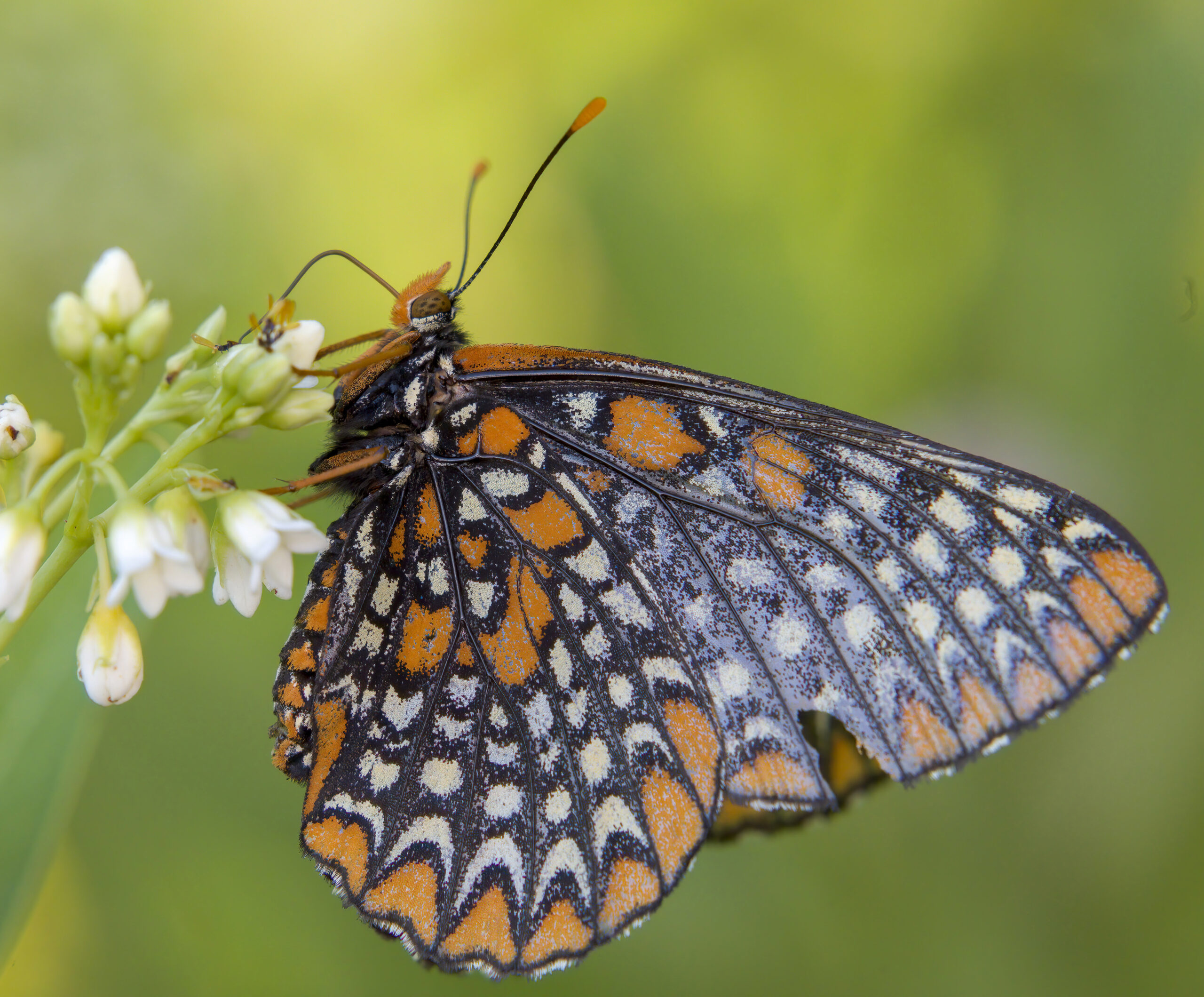The cold days of winter aren’t always ideal for hiking, so I find this season is a great opportunity to revisit old photos and learn about the animals I encountered. I have discovered that butterflies are the perfect antidote to my winter blues; their bold colours and fragile beauty are a welcome change from the snow and ice of January.
COVER PHOTO: This adult Baltimore checkerspot is feeding on hemp dogbane. The adults prefer a range of flowers, but as caterpillars, they feed almost exclusively on white turtlehead.
The star of the butterfly world in recent years is the monarch (Danaus plexippus), but there is another orange and black butterfly in Niagara that is just as interesting: the Baltimore checkerspot, Euphydryas phaeton. Like the Baltimore oriole, its common name was inspired by its likeness to the coat of arms of George Calvert, the first Lord Baltimore.
Unlike many butterflies which endure winter as eggs or pupae, the Baltimore checkerspot overwinters as a caterpillar. In late summer, it stops feeding and constructs a silk shelter, where it hides until autumn. Then it hides on the ground among leaves and grass. When spring arrives, the bold orange and black caterpillar resumes feeding. It pupates as a beautiful white and orange chrysalis and emerges as an adult to start the next generation of checkerspots.

Another orange rival to the monarch is the great spangled fritillary, Speyeria cybele. The adults have warm orange and black wings, with undersides spangled in blue, white and black – hence their common name. Adults frequent fields of Joe Pye weed or milkweed, and the black caterpillars, spiked in orange, prefer to feed on violets.
Like many butterflies, the great spangled fritillary has long, clubbed antennae. The antennae are important for finding food as well as locating preferred plants for their offspring. Last summer, I had an encounter with a great spangled fritillary that also shows how important the antennae are for evading danger.
I approached a group of fritillaries in a sunny field of clover, but most of the butterflies noticed me and fled. One stayed and seemed unbothered no matter how near I stood. While photographing it, I discovered that it was missing both of its antennae. Perhaps they were damaged when the butterfly was pupating, or a predator injured it. Regardless, it did not object to my presence, and could even be coaxed onto my finger. I’m certain that if it had its antennae, it would have fled at my approach.

While many butterflies frequent sunny fields, the northern pearly-eye (Lethe anthedon) can often be seen fluttering between trees in our hardwood forests. The pearly-eye strikes an interesting mix between camouflage and warning colouration: most of the body and wings are a muted brown, which helps it to blend in on tree trunks. However, the wings are also edged in striking eyespots of black, with white centres and bold outlines. Many butterflies and moths have similar eyespots; this may help to startle potential predators or distract them from striking vital body parts. The eyed brown (Lethe eurydice) and little wood satyr (Megisto cymela) are two other Niagara butterflies with similar eyespots.
Northern pearly-eyes feed on sap, but also get nutrients from carrion or dung – often alongside several other butterfly species all feeding off the same source. This is called puddling. Pearly-eyes can often be observed puddling in a group with viceroys (Limenitis archippus), red spotted purples (Limenitis arthemis), and zebra swallowtails (Protographium marcellus). However, one frequent puddler often stands out: the black swallowtail (Papilio polyxenes).

The black swallowtail has velvety black wings edged with yellow spots; females also have glittery blue markings on their rear wings. The blue markings are a form of mimicry; predators may avoid female black swallowtails as they resemble the pipevine swallowtail (Battus philenor). Like the monarch, the pipevine swallowtail consumes poisonous plants as a larva, which make it distasteful to predators. Males share these blue markings, but they are less prominent; the mimicry acts to protect females while they are vulnerable and laying eggs.
One may not think that butterflies are aggressive or territorial, but the black swallowtail would be an exception. Adult males emerge from pupation before females and establish territory that they defend from other males. Females emerge later and select a mate from the male defending the best territory. After mating, the female leaves while the male remains to continue his defence in case another female arrives in his territory.
While we are still months away from the first butterfly flights of 2022, I have enjoyed taking advantage of winter’s downtime to learn more about their behaviour. Understanding our experiences in nature enriches our lives with knowledge. This winter, I hope you take the opportunity to learn more about the animals you encountered in 2021. If you have a nature story you’d like to share, please email me at [email protected].
